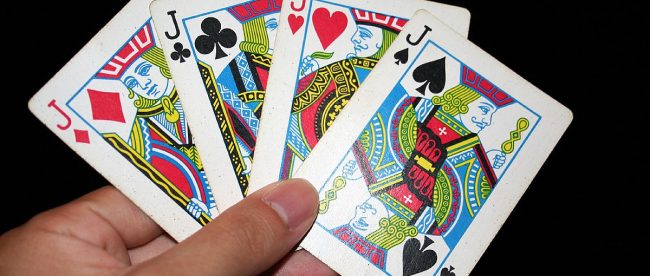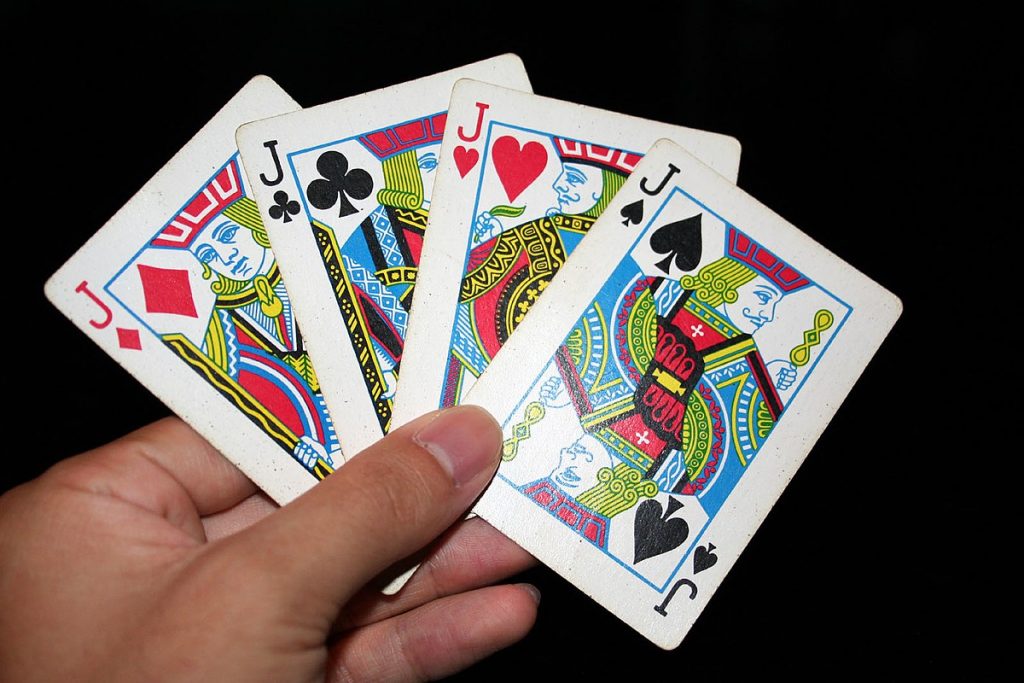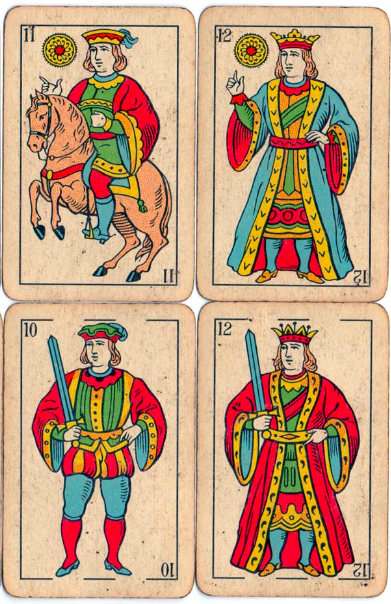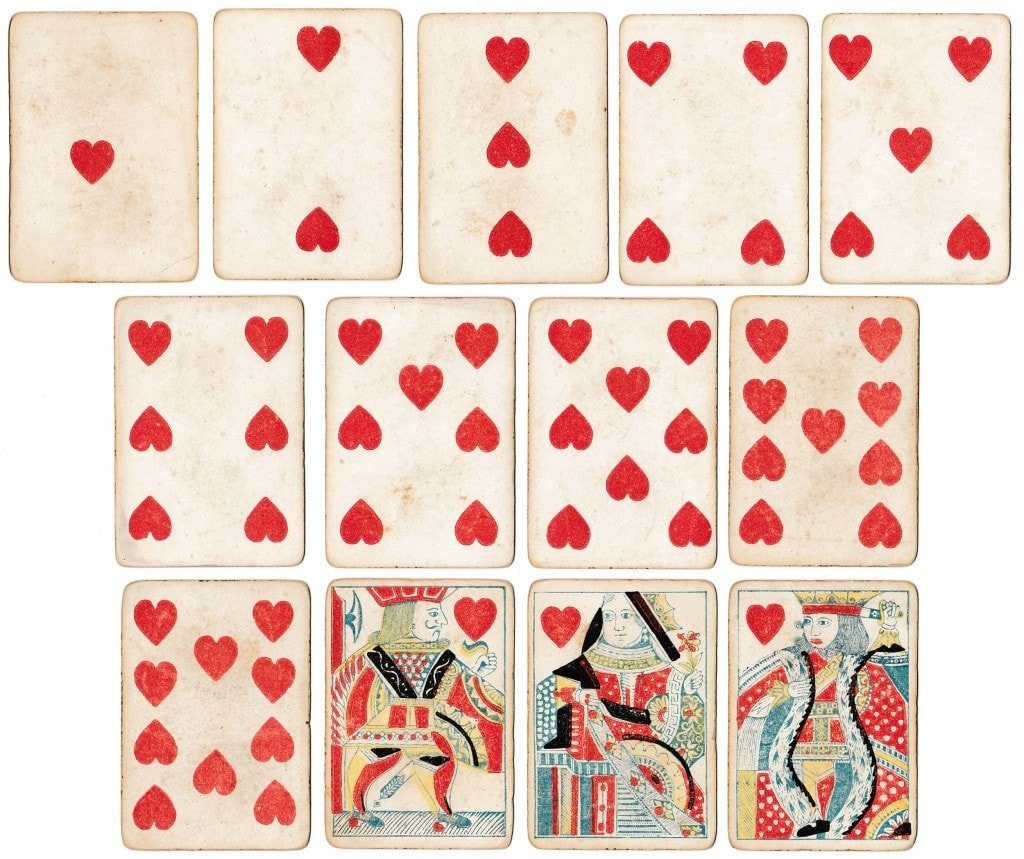Kings and Queens are Royals. But What’s a Jack?


Open up just about any deck of cards (sorry, pinochle!) and you’ll find the same thing — 52 cards, four suits, and a total of twelve “face cards.” That dozen is made up of three ranks: Kings, Queens, and Jacks, and the cards typically depict people of nobility and with crowns. You know, royalty. And when it comes to gameplay, being royalty has its privileges. Depending on the game you’re playing, Kings are often the highest-ranking cards. Then come the Queens, which given that card games came from a less egalitarian time, makes sense.
And then come princes and princesses, right? But, no, decks of cards have neither of those. Instead, we have Jacks, as seen above, which is really weird because in almost no other context is the word “jack” used in reference to a royal court. Where does the Jack come from?
To start, original decks were even less egalitarian than today’s. As seen below (via here), all three face cards depicted men (and, as an aside, there was no separate Ten card). In English, those three ranks were referred to as the King, Knight (on horseback), and Knave (sword, tights, and funny hat). The King was royalty, but the others were support — men in service of the king.

When playing cards spread to France, the French swapped the Knight out for the Queens we have today, for reasons unknown, and the Queen became the preferred representation of the penultimate rank throughout the world shortly thereafter. The Knave, however, remained the same, ranking just below the Knight-turned-Queen.
“Knave” remained the name of choice for about two centuries — at least if you were an upper-crust type. In the English language generally, as Etymology Online notes, “Jack became a generic name applied familiarly or contemptuously to anybody (especially a young man of the lower classes) from late 14th century.” As a knave is “a tricky deceitful fellow” per Merriam-Webster, the two are somewhat interchangeable. It wasn’t the type of language proper peopled used, though, and the card-playing elite were typically proper people. So while some commoners and laborers used the term “Jack” instead of “Knave” while playing cards, it was rare otherwise — and often seen as uncultured if not uncouth. For example, in the 1861 Charles Dickens novel “Great Expectations,” the narrator-protagonist, Pip, is playing cards with his love interest, Estelle. When Pip uses the term “Jack” instead of “Knave,” Estelle uses it as a basis to judge Pip’s worth:
“He calls the knaves Jacks, this boy!” said Estella with disdain, before our first game was out. “And what coarse hands he has! And what thick boots!”
I had never thought of being ashamed of my hands before; but I began to consider them a very indifferent pair. Her contempt for me was so strong, that it became infectious, and I caught it.
She won the game, and I dealt. I misdealt, as was only natural, when I knew she was lying in wait for me to do wrong; and she denounced me for a stupid, clumsy laboring-boy.
Today, of course, you can not only get away with calling the card a Jack, but you’d likely be laughed at for calling it a Knave. So what changed? In the mid-1800s, many decks, such as the one below (via here), didn’t have the rank of the card on the corners of the card face.

But around the time Great Expectations coincidentally came out, card designs shifted. In order to allow players to fan out their cards, as seen in the image at the top (and you can make the fan much tighter), card makers began printing the cards’ ranks in the corners. The Knave was labeled “Kn,” with the “n” added to distinguish it from “K”-labeled Kings. Card manufacturers looked for a solution, and Jack — despite the low-class connotation it came with — won out. Being proper, it seems, was less important than having an unmistakable “J” in the corner of one’s cards.
Bonus fact: In most card games, the Ace now outranks the King, and the word “ace” generally has a positive connection as a result — it’s the term used to note an unreturned serve in tennis, to heap praise on a star pitcher in baseball or a top pilot in the military, etc. But that wasn’t always the case. The Ace is also the lowest card in the deck — it’s the one with only one pip. Why it’s not called the “One” card is a historical relic; in early dice games, the die side with only one pip was called the Ace in likely in reference to an old Roman coin similarly worth only one unit of currency. As a result, “ace” used to have a negative connotation — rolling the Ace on a die or pulling the Ace from a deck of cards was seen as bad luck. Card playing changed that. Per Etymology Online, “the extended senses based on ‘excellence, good quality’ arose in the 18th century as card-playing became popular.”
From the Archives: Shuffled: Shuffle a deck of cards a few times, and there’s a good chance you’ve created something never before ever created.
